Understanding Custom Orthotics
Custom orthotics have become an essential tool in modern foot care, offering tailored solutions for a variety of foot and lower limb issues. These specially designed devices go beyond generic shoe inserts by addressing individual biomechanics to support, align, and protect the foot. This introduction provides an overview of what custom orthotics are, the foundational aspects of their design, and why they are pivotal in managing and preventing foot problems.
How Custom Orthotics Work: Mechanisms and Biomechanical Impact
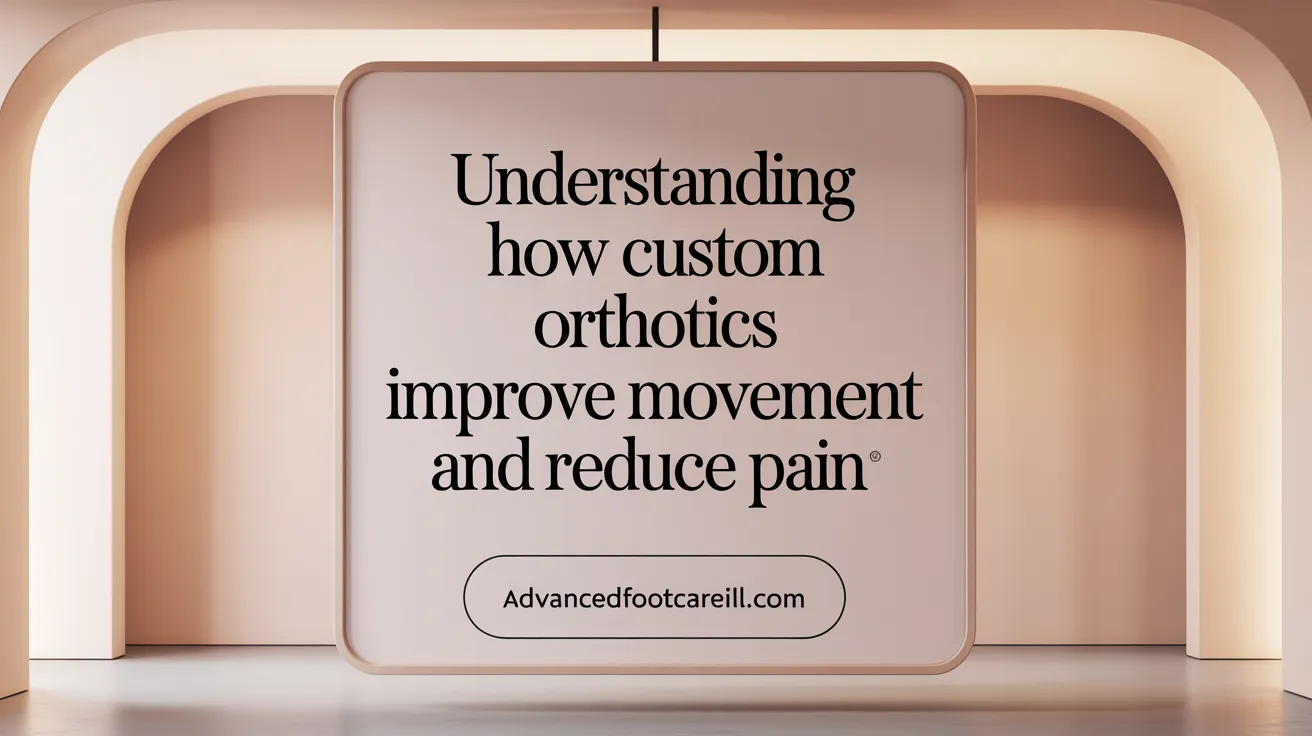 Custom orthotics function through a combination of personalized support and precise biomechanical correction, tailored specifically to an individual’s unique foot structure and movement patterns. Using advanced technology like 3D scanning or plaster molds, podiatrists analyze the foot’s biomechanics to identify abnormal motions, such as overpronation or high arches, that contribute to pain and injury.
Custom orthotics function through a combination of personalized support and precise biomechanical correction, tailored specifically to an individual’s unique foot structure and movement patterns. Using advanced technology like 3D scanning or plaster molds, podiatrists analyze the foot’s biomechanics to identify abnormal motions, such as overpronation or high arches, that contribute to pain and injury.
These orthotics support all three key arches of the foot—the medial longitudinal, lateral longitudinal, and transverse arches—ensuring proper weight distribution across the foot’s surface. This not only enhances shock absorption during activities like walking and running but also stabilizes the foot, preventing excessive movement that could cause strain.
By correcting malalignments, custom orthotics influence gait and posture, helping to realign the ankles, knees, hips, and spine. This correction alleviates undue stress on muscles, ligaments, and joints, reducing pain and the risk of further injury.
The materials used—such as carbon fiber, polypropylene, EVA foam, or soft cushioning materials—are selected to ensure durability, flexibility, and comfort. This material support enhances the orthotics’ ability to withstand daily forces while providing optimal support.
Overall, the mechanisms of custom orthotics involve guiding the foot into a more neutral, biomechanically efficient position. This process helps improve overall body alignment, enhances movement efficiency, and offers long-lasting relief from foot and lower limb pain, supporting better posture and optimized performance.
Supporting Arches and Correcting Alignment: Enhancing Foot Function
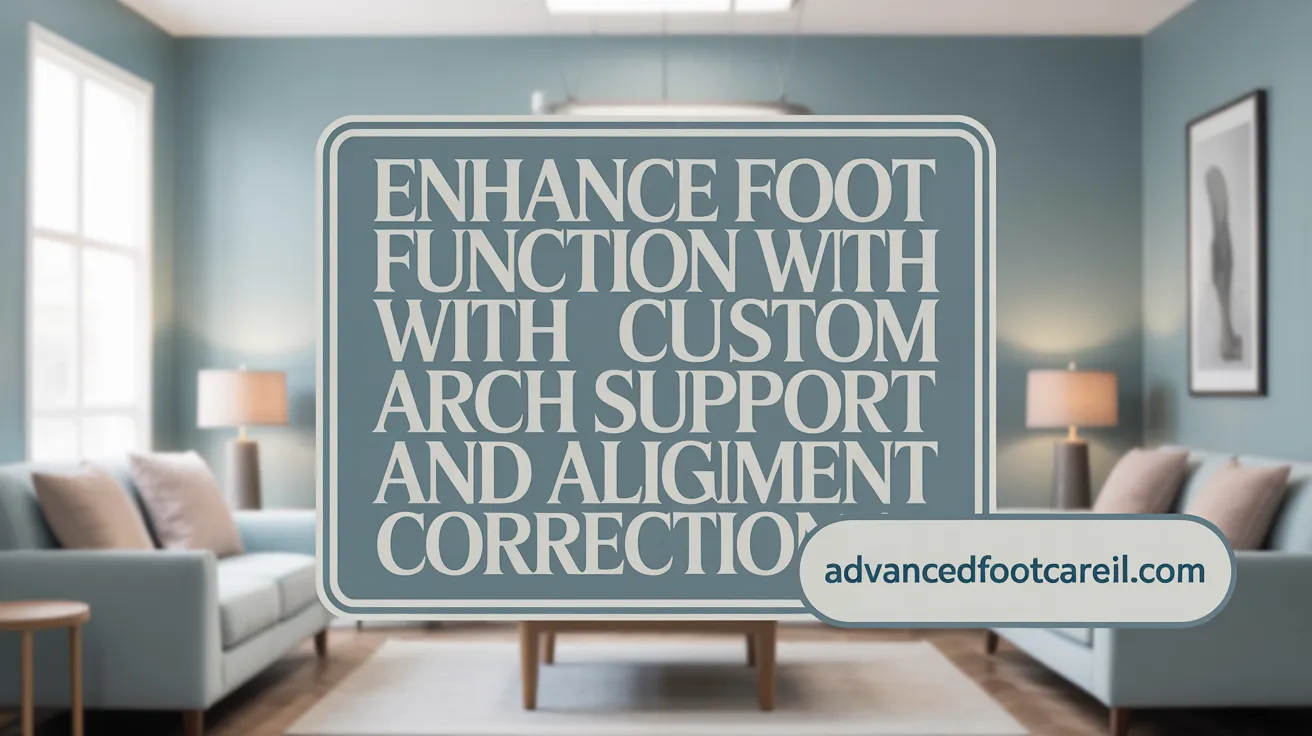
How do custom orthotics support the arches, alignment, and overall foot function?
Custom orthotics are meticulously designed to support the feet’s natural structures, particularly the arches. They provide tailored cushioning and structural reinforcement that help maintain proper arch height, ensuring that the foot's biomechanics are supported during both walking and standing. This targeted support distributes pressure evenly across the foot’s surface, reducing stress on specific areas that are prone to pain or deformity (Benefits of orthotics, Arch supports function, Foot pads for orthotics).
Beyond arch support, orthotics play a crucial role in correcting misalignments by guiding the foot into an optimal position. This correction improves the mechanics of each step, promoting stability and efficiency in gait. Proper foot alignment achieved through orthotics helps realign the entire lower limb, from the ankles up through the knees, hips, and lower back (Orthotics for foot alignment, How orthotics support feet and ankles). This holistic approach reduces the abnormal stresses and strains that often contribute to joint pain, muscular fatigue, and structural deformities (How orthotics improve foot alignment).
Orthotics enhance overall foot function by controlling excessive or undesirable movements, whether through semi-rigid or flexible designs. Functional orthotics, made from materials like plastic or carbon fiber, limit abnormal motion that can lead to injuries or discomfort, while accommodative orthotics provide cushioning for sensitive or ulcer-prone feet (Functional vs accommodative orthotics, Types of orthotics, Materials used in orthotics).
The benefits extend further to improving posture and spinal alignment, which can positively influence athletic performance and daily activity stamina (How custom orthotics can improve ankle, back, knee and foot pain, Custom Orthotics Benefits). Ultimately, well-designed orthotics support the foot’s natural role as the foundation of mobility, promoting healthier movement patterns, reducing pain, and helping prevent future problems (Benefits of Custom Orthotics).
In summary, custom orthotics support the arches, correct foot and limb misalignments, enhance overall foot function, and positively impact the entire kinetic chain, contributing to a healthier, more balanced body.
Indications and Conditions Managed by Custom Orthotics
What are the common indications and signs that suggest a person might need custom orthotics?
People experiencing chronic foot and ankle pain, such as from plantar fasciitis, bunions, hammertoes, or arthritis, often benefit from custom orthotics. Signs that suggest a need include abnormal walking patterns (gait), poor posture, uneven or excessive shoe wear, frequent injuries like sprains, and pain or swelling, especially in the heel or forefoot after activity. Balance issues, foot deformities, or recent injuries that disrupt gait are also important indicators. Moreover, individuals with conditions like diabetes, which predispose them to foot ulcers and other complications, may require orthotics for prevention and ongoing support. Healthcare providers carefully evaluate these signs to determine if orthotics can improve mobility, reduce pain, or help prevent deformities.
Which foot conditions and disorders can be prevented or managed with custom orthotics?
Custom orthotics are versatile in preventing and managing many foot problems. They are commonly used for plantar fasciitis, flat feet, high arches, bunions, and Achilles tendinitis. By providing customized support, orthotics help redistribute pressure, stabilize the arches, and decrease strain on inflamed or overused tissues. They are also effective for managing deformities like hammertoes and calluses, as well as nerve issues such as Morton’s neuroma. For patients with arthritis or diabetic foot issues, orthotics reduce pressure points, improve stability, and assist in wound prevention. They address gait abnormalities contributing to knee, hip, and lower back pain, making them integral for overall musculoskeletal health.
How do custom orthotics help in treating specific foot problems such as plantar fasciitis, flat feet, and bunions?
For plantar fasciitis, orthotics provide arch support and absorb shock to decrease stress on the plantar fascia, alleviating heel pain. In flat feet cases, they support the arches to prevent overpronation, promoting better foot function and reducing strain on the lower limbs. For bunions, orthotics help redistribute body weight away from the protruding joint, alleviating discomfort and possibly slowing progression by improving overall foot alignment. These devices are crafted to fit each foot’s unique shape, ensuring precise correction and relief. Overall, targeted support from well-fitted orthotics offers significant benefits in pain reduction, improving biomechanics, and preventing further deterioration of foot health.
Types, Designs, and Materials of Custom Orthotics and Their Applications
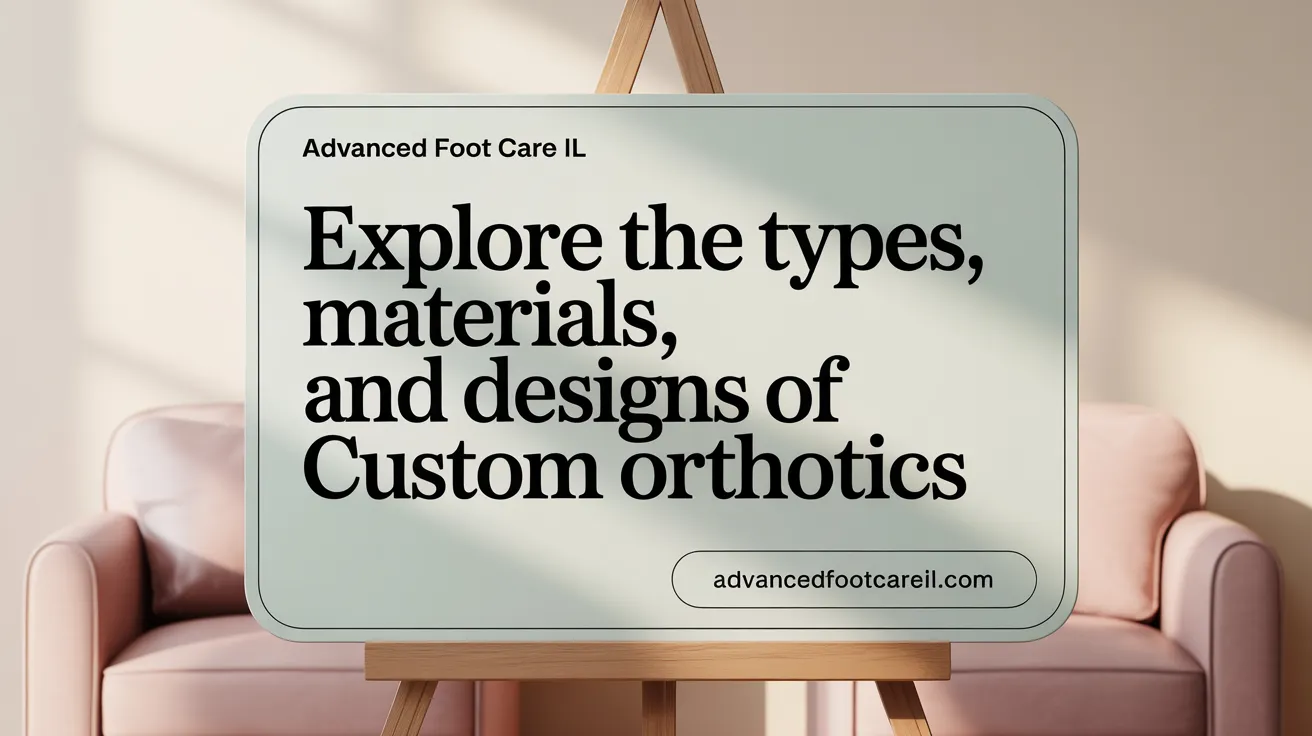 There are several types and designs of custom orthotics, primarily classified into functional (rigid) orthotics, accommodative (soft) orthotics, and semi-rigid orthotics. Functional orthotics are typically made from hard materials like plastic or carbon fiber, which are used to control abnormal foot motion, reduce pain, and improve joint stability. They are often prescribed for conditions such as overpronation, arthritis, or plantar fasciitis where biomechanical correction is prioritized.
There are several types and designs of custom orthotics, primarily classified into functional (rigid) orthotics, accommodative (soft) orthotics, and semi-rigid orthotics. Functional orthotics are typically made from hard materials like plastic or carbon fiber, which are used to control abnormal foot motion, reduce pain, and improve joint stability. They are often prescribed for conditions such as overpronation, arthritis, or plantar fasciitis where biomechanical correction is prioritized.
Accommodative orthotics, on the other hand, utilize soft, cushioning materials that mold closely to the foot’s contours. Their main purpose is pressure relief and support for deformities, chronic ulcers (particularly in diabetic patients), or other conditions requiring extra cushioning and protection.
Semi-rigid orthotics combine both soft and rigid components. They are designed to offer a balance between support and shock absorption, making them suitable for more active individuals or for addressing flat feet and arthritis. Each design is tailored to the individual's specific condition and activity level, ensuring support, comfort, and effective correction.
The choice of materials plays a vital role in the orthotic’s effectiveness and durability. Thermoplastics such as polypropylene, nylon, and high-modulus plastics provide structural support necessary for biomechanical correction in functional orthotics. These materials are chosen for their strength, stiffness, and longevity.
For cushioning and shock absorption, advanced flexible materials like EVA (ethylene-vinyl acetate), Poron, cork, and soft foams are used. They enhance comfort, reduce pressure points, and protect sensitive areas during prolonged standing or activities.
Modern manufacturing techniques like 3D printing have expanded options for custom orthotics. They allow complex, multi-density structures that precisely match the patient’s biomechanical needs. These designs can feature unique lattice or honeycomb structures, which optimize support while maintaining light weight.
Overall, the selection of materials impacts the orthotic's support capabilities, flexibility, lifespan, and comfort. Tailoring the material choices to the patient's condition and activity demands ensures that each orthotic effectively addresses specific foot problems while promoting durability and user comfort.
Designing and Manufacturing Custom Orthotics: From Assessment to Fabrication
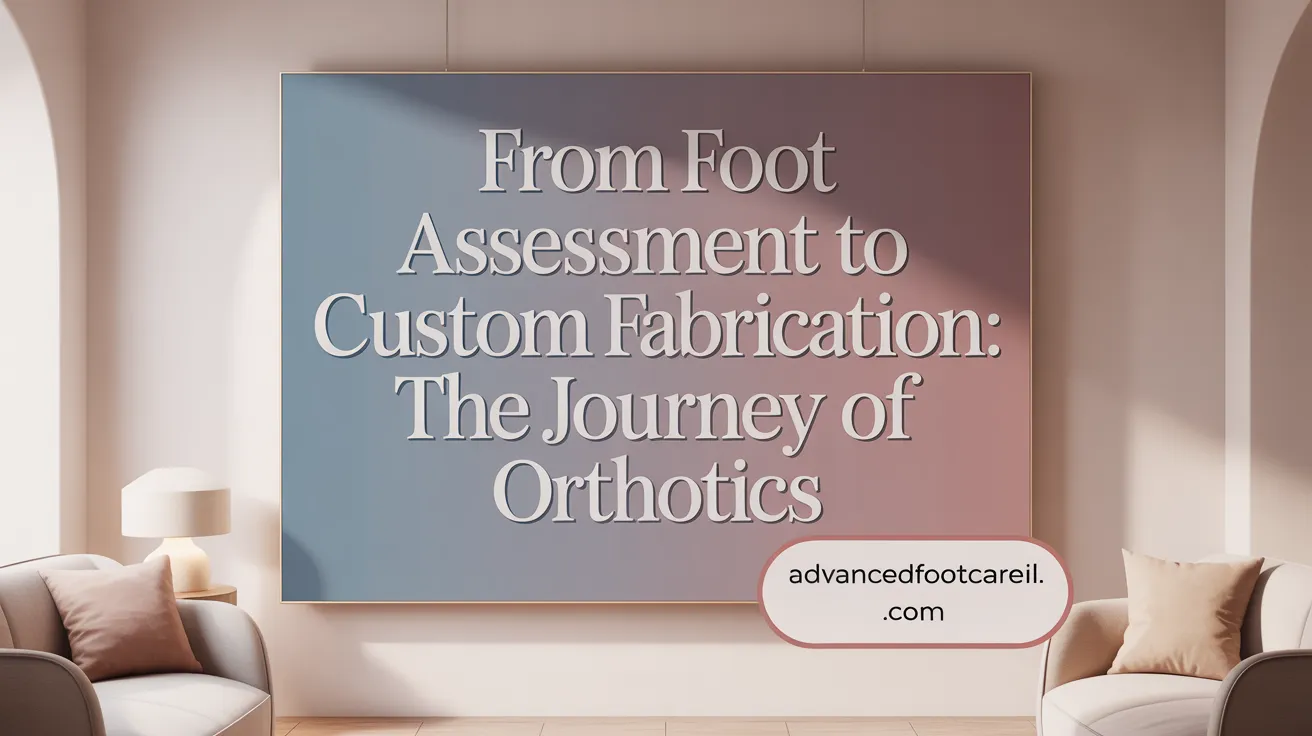 The process of designing and manufacturing custom orthotics begins with a thorough foot assessment performed by a trained healthcare professional such as a podiatrist. This assessment employs various foot assessment techniques including visual examinations, gait analysis, pressure mapping, and sometimes motion analysis. To accurately capture the unique shape and biomechanics of the patient's foot, different casting and scanning methods are used. Traditional techniques involve creating a plaster cast or using bio-foam molds, where the foot is pressed into a soft material to form an impression. In recent years, advanced digital scanning techniques have gained popularity, utilizing devices like 3D scanners and iPad-based systems to produce precise digital models of the foot.
The process of designing and manufacturing custom orthotics begins with a thorough foot assessment performed by a trained healthcare professional such as a podiatrist. This assessment employs various foot assessment techniques including visual examinations, gait analysis, pressure mapping, and sometimes motion analysis. To accurately capture the unique shape and biomechanics of the patient's foot, different casting and scanning methods are used. Traditional techniques involve creating a plaster cast or using bio-foam molds, where the foot is pressed into a soft material to form an impression. In recent years, advanced digital scanning techniques have gained popularity, utilizing devices like 3D scanners and iPad-based systems to produce precise digital models of the foot.
Once the foot's shape and structure are documented, the data is translated into a positive mold or a detailed digital model. This model serves as the basis for the fabrication process. Modern manufacturing methods include CNC milling, where computer-controlled machines carve the orthotic shell from high-quality materials such as thermoplastics or carbon fiber sheets. Alternatively, additive manufacturing, commonly known as 3D printing, creates the orthotic by layering materials with high precision, allowing complex geometries and targeted support structures.
Material forming and layering are crucial steps to ensure durability, flexibility, and comfort. Heat-moldable materials like PRX are shaped under vacuum pressure to conform precisely to the mold, while layers of padding, foam, or gel are applied for additional cushioning. The orthotic is then assembled with careful attention to thickness, contour, and support zones (Orthotic Materials and Durability).
Fitting and adjustment procedures are vital to ensure optimal performance. The orthotic is tried on the patient, and minor modifications are made to improve comfort and function (Orthotics adjustment period). Proper finishing, smoothing, and polishing prevent discomfort during use. Educating the patient on how to wear and maintain their orthotic is also part of the process (Orthotics care and replacement tips).
Follow-up and maintenance are essential to sustain the orthotic’s effectiveness. Regular check-ups allow clinicians to observe how the device performs over time and make adjustments if necessary. Orthotics typically require replacement or refurbishment every 2-5 years, depending on wear and changes in foot structure, activity levels, and overall health (Orthotics lifespan and care). This comprehensive approach ensures that custom orthotics provide tailored support, alleviate pain, and enhance overall mobility.
Clinical Effectiveness and Long-term Benefits of Custom Orthotics
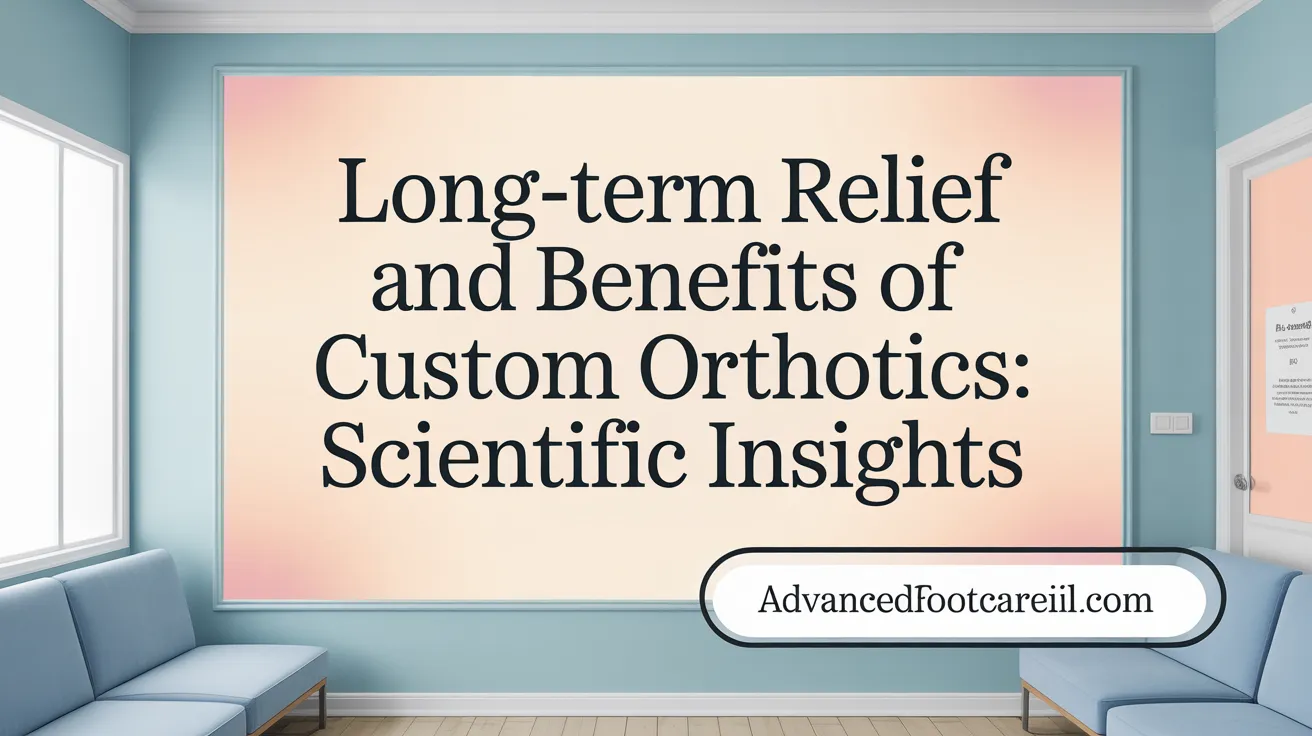 Scientific evidence and clinical research indicate that custom orthotics, especially customized foot orthoses (CFOs), can effectively reduce foot pain and improve biomechanics. Multiple studies have demonstrated that CFOs significantly decrease abnormal motions of the foot and lower limb during walking, which helps alleviate stress on tissues such as the plantar fascia. This reduction in biomechanical strain is linked to symptomatic relief in patients suffering from conditions like plantar fasciitis and heel pain.
Scientific evidence and clinical research indicate that custom orthotics, especially customized foot orthoses (CFOs), can effectively reduce foot pain and improve biomechanics. Multiple studies have demonstrated that CFOs significantly decrease abnormal motions of the foot and lower limb during walking, which helps alleviate stress on tissues such as the plantar fascia. This reduction in biomechanical strain is linked to symptomatic relief in patients suffering from conditions like plantar fasciitis and heel pain.
Research findings also show that long-term use of CFOs can lead to meaningful improvements in pain levels, gait patterns, and overall foot function. For example, patients with biomechanical impairments often experience lasting benefits, including improved stability and decreased discomfort. These benefits are particularly evident in individuals with higher initial pain scores or structural foot abnormalities.
Studies on psoriatic arthritis and similar conditions further support the use of custom orthotics, revealing significant enhancements in function and reductions in pain. However, despite these promising results, the scientific community acknowledges that existing studies often face limitations such as small sample sizes and heterogeneity in methodology, underscoring the need for more large-scale, high-quality research.
In summary, current evidence suggests that custom orthotics provide considerable benefits for foot pain relief, biomechanical correction, and functional improvement. They are especially valuable when tailored to the individual’s specific needs, emphasizing the importance of detailed assessment and personalized design. Ongoing research is crucial to further validate these findings and optimize orthotic interventions for broader patient groups.
Embracing Custom Orthotics for Lasting Foot Health
Custom orthotics offer a scientifically grounded and personalized approach to managing and preventing a broad spectrum of foot and lower limb problems. By carefully addressing individual biomechanics, supporting foot arches, and improving alignment, these devices provide crucial pain relief and enhance mobility. Their diverse types and materials allow tailored solutions for specific conditions, supported by advanced manufacturing techniques ensuring optimal fit and function. Although evidence underscores their efficacy in improving foot health and function, ongoing research continues to refine their application. Ultimately, adopting custom orthotics under professional guidance can significantly enhance quality of life by preserving foot health, preventing deformities, and promoting overall musculoskeletal wellness.
